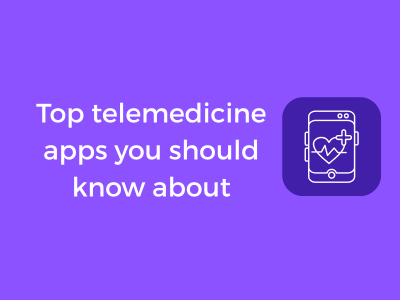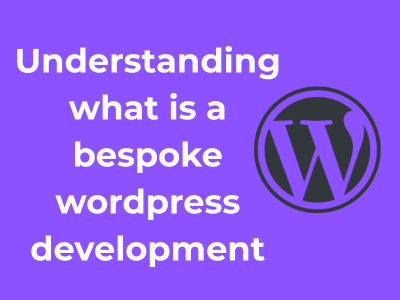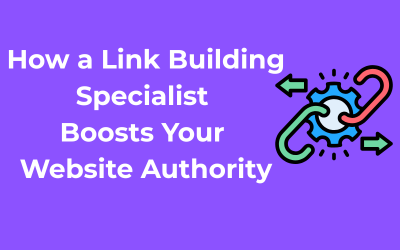Have you ever imagined a world where artificial intelligence could assist your doctor in diagnosing your symptoms? Well, we’re already living in it! AI-driven consultations have become one of the most innovative aspects of telemedicine apps, making healthcare smarter, faster, and more accessible than ever. Let me walk you through the wonders of how this works and why it’s such a game-changer.
Why Should You Care?
Still wondering why this matters? Here’s how AI-driven consultations are revolutionizing healthcare for everyone:
- Speedier Diagnoses: No more waiting hours or days for answers. Your doctor can leverage AI insights in real-time to make more informed decisions.
- Increased Accuracy: AI tools can analyze huge amounts of data much faster than any human ever could, which means spotting patterns doctors might miss.
- Accessibility: For people living in remote areas where healthcare services are scarce, AI within telemedicine apps bridges the gap by providing accurate preliminary insights.
- Cost-Effective: By speeding up the diagnostic process and tackling common ailments quickly, AI helps cut down on unnecessary trips, tests, and costs.
Real-Life Examples
Some popular telemedicine apps have already integrated AI-driven consultations seamlessly into their platforms. For instance, apps like Babylon have AI chatbots that perform initial symptom checks. Tools like this not only provide peace of mind but also ensure you get connected with the right specialists, saving you time and frustration.
Can AI Replace Doctors?
Absolutely not! Think of AI as an ally rather than a replacement. It acts as an enhancer rather than a substitute—it cannot replace the empathy, judgment, and expertise that only human doctors bring to the table. Instead, it frees up healthcare professionals to focus on what they do best: providing compassionate, patient-centered care.
Multi-Specialist Networks in a Single App
Imagine having a one-stop app where you could consult with a therapist, a dermatologist, and even an orthopedic specialist—all without ever leaving the comfort of your home. Well, that’s the magic of telemedicine apps that feature multi-specialist networks. These apps bring together a team of healthcare experts across various fields, making it incredibly easy for you to access the care you need.
Why Is This Such a Game-Changer?
Gone are the days of scheduling multiple appointments in different clinics or hospitals. With these kinds of telemedicine apps, you can switch between specialists seamlessly. Need advice on a persistent skin issue but also want a quick check-in with a nutritionist? No problem! These apps make it all possible in just a few clicks.
Benefits of Multi-Specialist Networks
- Convenience: All your specialized healthcare needs are catered to in one place. No running around or endless phone calls to make separate appointments.
- Reduced Waiting Times: These apps often cut down on the time it takes to see a specialist, which is a blessing for non-emergency but still urgent medical requirements.
- Holistic Care: With interconnected networks, you’re not dealing with isolated specialists; many apps ensure that doctors can share medical information (with your consent) for better, coordinated treatment.
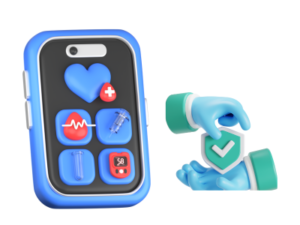
Who Benefits the Most?
The beauty of multi-specialist apps is that they really do cater to everyone, but here are some groups that stand to gain the most:
- Families—With so many specialists available, these apps are like a healthcare “supermarket,” perfectly suited for addressing the diverse medical needs of your household.
- Busy Professionals—If you’re juggling work and life, having quick, integrated access to multiple specialists can save you both time and stress.
- Chronic Disease Patients—Managing conditions like diabetes or arthritis often means seeing different healthcare providers. These apps create a virtual space for an integrated care experience.
Pro Tips for Choosing the Right App
Not all telemedicine apps are created equal. Here are a few tips to help you select the best one:
- Check the Specialist Network: Look for apps that have a wide range of specialists in their network, particularly those you’re most likely to need.
- Review Licenses and Credentials: Always prioritize apps that verify the qualifications and certifications of their medical professionals.
- Accessibility Options: Does the app offer additional accessibility features like live translation or support for hearing or visually impaired users?
Seamless Integration with Wearable Devices
Wearable devices are no longer just fancy gadgets; they’ve become an essential part of how we manage our health. From fitness trackers to smartwatches, these devices provide incredible insights into our physical well-being. Now, imagine syncing this information directly with your telemedicine app—pretty cool, right?
Why This Matters
Wearable devices track everything from your heart rate to your sleep patterns. For people managing chronic conditions or just aiming to lead healthier lifestyles, this data is a goldmine. But its true power shines when it’s shared in real-time with healthcare providers. With telemedicine apps offering seamless integration with wearables, your doctor can view your vital stats without needing you to step into a clinic.
Benefits of This Integration
- Proactive Care: Wearables alert you to irregularities like elevated heart rates or irregular sleep cycles. With the right integration, your telemedicine app can flag these issues to your healthcare provider immediately, allowing quick action.
- Customization at Its Best: Apps equipped with wearable compatibility can tailor health recommendations based on your unique day-to-day stats. It’s like having a personal health coach who knows you inside out!
- Reducing Guesswork: Gone are the days of vague symptom descriptions during appointments. When your data is precise, so is your diagnosis and treatment. No more “I think I felt dizzy last week.” Your wearable’s been keeping tabs for you!
Examples of Smart Usage
Consider this: You’re dealing with high blood pressure, and your doctor recommends using a smartwatch that tracks your blood pressure levels. With integration, the telemedicine app can automatically upload this data into your health profile. Your healthcare provider receives a full report before your next virtual consultation, enabling them to adjust medications or suggest lifestyle changes accordingly. No more pesky manual logs—everything happens automatically!
Or, let’s say you’re someone who’s training for a marathon. Thanks to wearables and your telemedicine app linking up, your physician can monitor your heart rate trends and endurance, ensuring you train safely.
For Patients of All Ages
While technology might seem intimidating to some, the combination of wearables and user-friendly telemedicine apps is designed to be accessible for all age groups. For older adults, wearable devices that monitor things like fall detection or irregular heartbeats can prove life-saving. With alerts sent to caregivers or medical professionals via the app, you’ve got a safety net in place without compromising independence.
Challenges to Keep in Mind
Integration of wearable devices with telemedicine apps isn’t without its hurdles, though. Concerns about data privacy and ensuring compatibility across different brands of wearables remain top of mind for both developers and users. But the good news is, advancements in secure data sharing and standardized protocols are making this pairing more reliable and user-friendly every day.
Affordable Options, Even Without Insurance
Healthcare can be expensive, there’s no denying that. But what if I told you that there are telemedicine apps out there that make high-quality medical care accessible and affordable—even if you don’t have insurance? Sounds like a dream, right? Let’s dive into why this is a game-changer for so many people.
Breaking Financial Barriers in Healthcare
Accessing healthcare traditionally without insurance often results in hefty out-of-pocket expenses, deterring many from seeking the care they need. This is where telemedicine apps come in as lifesavers. Many of these platforms now offer subscription models or pay-as-you-go options, ensuring that critical healthcare services are within reach for almost everyone. Imagine paying a reasonable flat fee to talk to a doctor, no insurance required—it’s like a breath of fresh air for your wallet!
Transparent Pricing: No Surprises!
One of the standout features of these apps is price transparency. Unlike traditional healthcare systems where you’re left guessing how much a visit or a procedure will cost, telemedicine platforms clearly outline the fees for consultations upfront. No more jaw-dropping bills showing up in your mailbox! For example:
- A basic consultation for a cold or flu could cost as low as $39.
- Specialist visits might range between $70-$90, which is still significantly less than traditional in-office consultations.
And with this, gone are the days of dreading unpredictable medical bills. Clarity is key, and telemedicine apps shine in this department.
Perks for the Uninsured
If you don’t have insurance, these apps don’t just provide access to doctors. They often throw in extra perks, too, like discounted lab tests or vouchers for medications. Some innovative platforms also offer memberships that include unlimited consultations during a specific time period. And guess what? These options aren’t limited to primary care. Many apps cover a variety of specialties, ensuring comprehensive care at your fingertips.
Saving Time and Money (Like, A Lot!)
Think about how much time and money you save by skipping the commute to a clinic or hospital. With telemedicine, there’s no need to take time off work or worry about transportation costs. You can speak to a healthcare professional from the comfort of your home, which is not just affordable but also incredibly convenient.
Who Benefits Most?
This feature is especially beneficial for:
- Young adults navigating life without employer-provided insurance.
- Families looking for budget-friendly options for minor medical needs.
- Freelancers, gig workers, or anyone without a traditional benefits package.
Basically, anyone who’s tired of sky-high medical expenses!
Round-the-Clock Access to Mental Health Assistance
Mental health matters, and having access to reliable support around the clock can be a game-changer. With telemedicine apps offering 24/7 mental health assistance, people now have convenient tools readily available at their fingertips. Let’s delve into why this type of service is changing the game and how it can be a vital lifeline for those in need.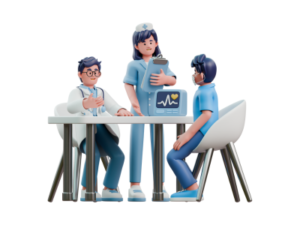
Why Mental Health Accessibility Matters
Everyone experiences tough days, stressful jobs, or moments where life feels overwhelming. However, mental health challenges don’t adhere to a 9-to-5 schedule. That’s why having constant access to qualified mental health professionals via telemedicine apps is so important.
Pro tip: These apps don’t replace emergency support like hotline services, but they do serve as a powerful resource for ongoing, professional mental health assistance for those who need a safe outlet and guidance over time.
Key Highlights of 24/7 Mental Health Services:
- Immediate Availability: Craving a late-night heart-to-heart with a therapist but missing traditional appointment windows? No worries! These apps provide access to qualified therapists and counselors whenever you need.
- From Anywhere, Literally: Whether you’re at home, traveling, or even unwinding in your pajamas, these apps mean you can connect from virtually anywhere. Location isn’t a barrier anymore!
- Text, Call, or Video Chat: Let’s face it: we all process things differently. Some prefer face-to-face video chats, while others might feel more comfortable texting their thoughts. Flexible communication options ensure there’s no pressure to fit a mold.
Who Benefits Most?
Flexible mental health services are universal: anyone facing stress, anxiety, depression, or even those who simply need a safe space to express themselves can benefit. However, the following groups reap the most out of these apps:
- Workaholics: Too busy to book an appointment? These apps are designed to fit your lifestyle.
- Night Owls: If your emotional struggles hit hardest in the middle of the night, you’re not out of luck anymore.
- Remote or Rural Populations: Accessing care in underserved areas is often challenging; luckily, telemedicine breaks geographical barriers.
- Youths and Teens: Gen Z and millennials often opt for tech-friendly mental health resources over traditional solutions, and this trend makes it easier.
How to Choose the Right App for You
When selecting a telemedicine app with 24/7 mental health services, here are a few key factors to keep in mind:
- Experience: Ensure the professionals your app connects you with are licensed and qualified in your region.
- Interface: Look for a user-friendly app that works reliably on your device.
- Reviews: User testimonials offer valuable insights. Positive feedback related to response times and professionalism indicates a quality service.
- Affordability: Many apps offer subscription options or even pay-as-you-go plans to fit varied budgets.
Localized Healthcare Solutions for Every Region
Can you imagine having a virtual doctor that truly understands your community’s unique health needs? That’s exactly what telemedicine apps offering localized healthcare bring to the table. They’re designed with regional nuances in mind, ensuring that no matter where you live, you’re getting healthcare that caters to *you* and your surroundings. Let’s dive into why this feature is such a game-changer!
The Importance of Localized Healthcare
Healthcare isn’t one-size-fits-all. Different regions have unique challenges: environmental factors, dietary habits, prevalent diseases, and even cultural ideals about wellness. For example, someone living in a dry, arid climate might need guidance on hydration and skin care that wouldn’t be relevant to someone in a tropical area. Addressing these specific needs ensures care that’s not only relevant but also effective.
Localized telemedicine apps go the extra mile by offering doctors who are familiar with the health trends, common conditions, and even available local resources in your area. Isn’t that reassuring?
Features That Stand Out
Healthcare apps focusing on localized solutions often include:
- Regional Doctor Networks: Connect users with licensed providers who understand the local health ecosystem.
- Health Alerts: Notifications on air quality, pollen count, or disease outbreaks in your locality.
- Culturally Tailored Care: Offering advice that aligns with the dietary preferences or holistic practices prevalent in your region.
- Local Pharmacy Compatibility: Direct integration with pharmacies nearby, so you can pick up a prescription or have it delivered quickly.
A Key to Bridging Gaps
Let’s talk about gaps in healthcare accessibility. A rural community might not have access to a diverse range of specialists. Sometimes, the nearest primary care physician can be a long drive away. Localized telemedicine solutions help bridge that gap by offering care where it’s needed most—your phone or computer.
Through these apps, you can tap into a network of care providers who are trained not just in general medicine, but in challenges that arise specifically in your area. This fosters equity and ensures that underserved communities don’t get left behind.
Examples in Action
Let’s look at a practical example. Imagine you live in the Midwest where seasonal allergies are a constant battle. A telemedicine app with localized features will not only connect you to a doctor who understands this but might also send regular updates on pollen levels and advice to mitigate symptoms based on regional statistics. How cool is that?
Or let’s say there’s a spike in waterborne illnesses in a coastal city. Instead of generic advice, these apps can warn users in that region and offer targeted tips for prevention.
Prescription Delivery Made Effortlessly Convenient
Let’s face it—life can get incredibly busy, and managing prescriptions is often the last thing we want to deal with, right? Imagine having your prescriptions seamlessly delivered to your door without stepping into a pharmacy or waiting in line. Sounds heavenly? Well, thanks to telemedicine apps, this dream is now a reality!
Why Prescription Delivery Is Such a Game-Changer
Gone are the days of juggling a hectic schedule just to pick up your life-saving medications. Prescription delivery through telemedicine apps has turned what used to be a time-consuming chore into a swift and stress-free experience. This feature is especially vital for:
- Busy professionals: No more pharmacy runs during your lunch break or after long work hours.
- Patients with mobility issues: People who find pharmacy visits physically challenging now have an easy, accessible alternative.
- Caregivers: Managing medications for someone else is now much simpler and more streamlined.
Plus, let’s be honest—avoiding unnecessary exposure to crowds, especially during flu season or similar health concerns, is a bonus! These apps make it not only convenient but also safer to access medication.
How It Works
If you’re curious how these platforms handle prescription delivery, you’ll be amazed at how straightforward it is. Here’s the general flow:
- Sign Up or Log In: Download the telemedicine app and set up your secure profile.
- Consult a Doctor: Schedule a virtual consultation to discuss your health concern with a licensed healthcare provider.
- Receive Your Prescription: Once approved, your prescription is electronically sent to a partner pharmacy.
- Home Delivery: Select your preferred delivery option, and voilà—your medications are dispatched directly to your home.
Some apps even allow automatic refills, which means no more worrying about last-minute runs to replenish your medication supply. These tools are designed to fit effortlessly into your life.
The Benefits Go Beyond Convenience
Beyond the obvious ease it brings, prescription delivery offers several other significant advantages:
- Medication Adherence: Studies show that when medications are delivered to a patient’s home, they’re more likely to take them as prescribed. No more skipping doses because you forgot to pick up a refill!
- Transparent Pricing: Many apps provide upfront costs, discounts, and even show comparisons between pharmacies, helping you save money.
- Privacy Matters: With discreet packaging, sensitive medications are delivered with your confidentiality in mind—no awkward pharmacy counters involved.

Tips for Using Prescription Delivery Apps
If you’re new to this service or on the fence about whether to give it a try, keep these tips in mind:
- Double-check app credentials: Choose apps that are endorsed by reputable healthcare institutions or government bodies.
- Review the delivery process: Make sure the app caters to your location and offers delivery timeframes that suit your needs.
- Stay proactive: Use notification features to remind yourself when refills are coming up.

